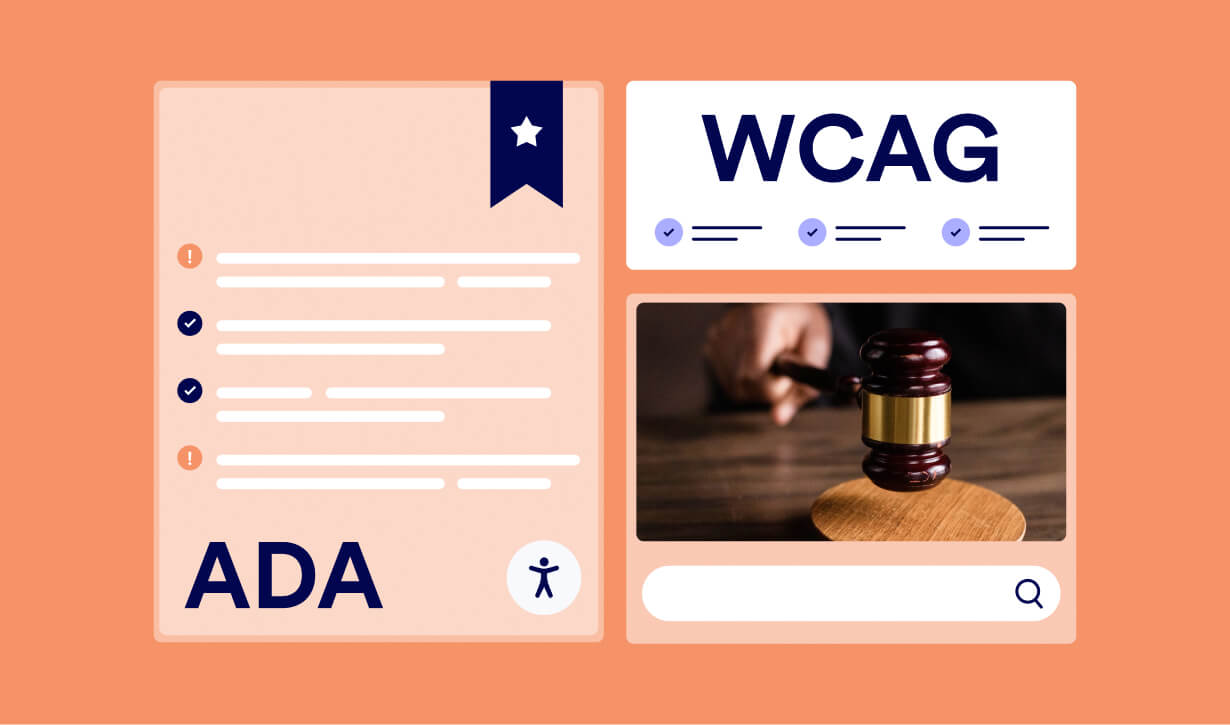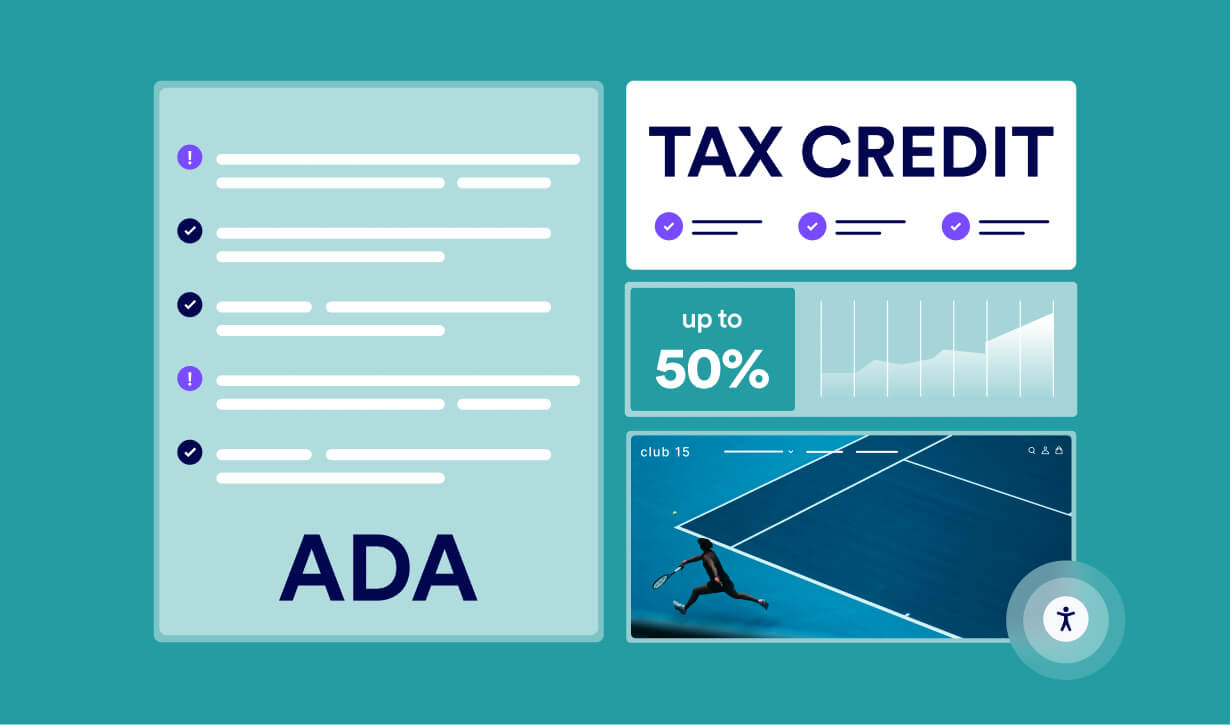
ADA and Compliance Information
Having an accessible and inclusive website is not only the right thing to do, but it also offers several benefits, such as increased traffic (with improved SEO) and eligibility for tax credits. It is important to note, however, that accessibility is first and foremost a legal requirement under the Americans with Disabilities Act (ADA). In addition to the legislation, we have seen a growing trend of lawsuits filed against non-compliant businesses in recent years. With timing becoming a significant factor, it is essential to ensure that you are familiar with the ADA and its relation to web accessibility to stay ahead of the curve and minimize the risks of legal ramifications.
This article aims to provide you with a comprehensive understanding of web accessibility regulations and standards, including the Americans with Disabilities Act (ADA), Web Content Accessibility Guidelines (WCAG), other relevant laws, and details on related lawsuit trends.
In addition to covering the essential information on these topics, the article also includes a dedicated section on how to present this information to your management staff.
Based on our experience, we have assembled the relevant key points worth emphasizing.
ADA and WCAG overview – what are they, and what do they cover?
ADA
The Americans with Disabilities Act (ADA) of 1990 provides comprehensive civil rights protections to individuals with disabilities in employment, state and local government services, public accommodations, transportation, and telecommunications. The ADA is America’s most important law regarding accessibility and civil rights for people with disabilities, including web accessibility.
As the internet became essential and websites played a more significant role in how consumers interact with businesses, the way ADA is applied to web accessibility began to change. Since 2018, a clear consensus has emerged that ADA covers the online world. Disability rights activists, legal scholars, and court rulings have agreed that websites, internet portals, and online stores must also be accessible to people with disabilities.
In 2022, the Department of Justice (DOJ) reaffirmed and clarified its 2018 ruling that websites are places of public accommodation and are subject to the ADA’s requirements of general non-discrimination and effective communication.
WCAG
The Web Content Accessibility Guidelines (WCAG) is a massive guidebook that explains how accessible websites should look and operate for people with disabilities. While it is not stated in the ADA, the WCAG has been widely accepted as the industry standard for being ADA-compliant.
Therefore, if you abide by the WCAG guidelines, your website should be considered compliant.
Additional laws that refer to web accessibility
In addition to the ADA, several other accessibility-focused legislations in the USA, Canada and different countries may be relevant depending on your business operation and location.
The laws you need to know about:
- Section 508 refers to a part of the Rehabilitation Act of 1973. It is a set of rules for government entities and any organization that receives federal funding. Based on section 508, any federal agency or government-funded organization must build and maintain all information and communications technology (ICT) so that they are accessible to people with disabilities. That means that if a business works or plans to work with a government entity, it must comply with section 508.
- Accessibility for Ontarians with Disabilities Act (AODA) – The Accessibility for Ontarians with Disabilities Act, 2005 (AODA) is an Ontario law that outlines standards through which organizations must become more accessible to people with disabilities. Under the AODA, private or non-profit businesses with at least 20 employees in Ontario must file an accessibility compliance report, which is done through a standardized form provided by the government of Ontario every three years.
- Colorado Office of Information Technology (COIT) is aligned with Section 508 federal standards and is requiring ADA compliance for all government agencies and anyone who receives government funding. In addition businesses and organizations face litigation risks associated with non compliance. Colorado is the first state to require both state and local governments to meet web accessibility standards through House Bill 21-1110. On June 30, 2021, Colorado’s Governor Jared Polis signed House Bill 21-1110 into law. In brief, the law takes some protections that are already included in the federal ADA act and encodes them in state law. That means people will be able to bring a website accessibility lawsuit to a state court, not just a federal one, thereby making it easier to sue a non-accessible government or business site.
- UNRUH – The Unruh Civil Rights Act (California Civil Code Section 51) protects from discrimination by all business establishments in California, including housing and public accommodations, because of age, ancestry, color, disability, national origin, race, religion, sex, and sexual orientation.
You can learn more here. - New York City Human Rights Law (NYHRA) – New York has enacted state-level, and city-level anti-discrimination legislation parallel to the Americans with Disabilities Act (ADA). The NYHRA protects people with disabilities from discrimination at work, home, and public spaces.
Lawsuit Trends – Numbers and trends of ADA-related lawsuits
The legislative landscape has changed in recent years, seeing a significant rise in web accessibility demand letters and lawsuits. Over the past few years, it is estimated that hundreds of thousands of businesses have received demand letters, with 3% resulting in a trial. For reference, 2022 saw an all-time high of ADA web accessibility lawsuits, with 3,250 cases filed.
Given this rise in legal claims against non-ADA-compliant businesses, you must be aware of this trend and its potential consequences for you and ensure that your websites are accessible and compliant with the ADA.
Below, we have summarized the most relevant information you should be aware of, including a trend graph of recent growth in web accessibility-related demand letters.
**Please note: Following this section, you will find information and collateral to share with your client. The data below is for your reference.
Key data and numbers:
- 2022 broke the record for ADA lawsuits and demand letters.
- In 2022, 3,250 lawsuits were filed, representing only 3% of demand letters, as 97% are settled before going to trial, which means the number of demand letters is even much higher.
- This means that approximately more than 100,00 business owners received demand letters in 2022 for having inaccessible websites.
- Since 2019, there has been an average of 13% year-on-year increase in web accessibility-related lawsuits.
- Organizations and businesses can be fined up to $150,000 for ADA violations, while the average ADA website lawsuit settlement typically ranges from $20,000 to $50,000.
Below you can see a graph with the trend in web accessibility-related demand letters, along with the year-on-year growth percentage:

Request a Free Website Compliance Audit Here:

What is the ADA Tax Credit
The U.S. government promotes and supports accessibility practices that comply with the Americans with Disabilities Act (ADA) by incentivizing the efforts made and sustained with a tax credit (a credit is an amount subtracted from your overall liability after calculating your taxes). You can receive up to $5,000 a year in tax credits and reduce your overall costs on products and services.
The tax credit, listed under Section 44 of the IRS Code, covers 50% of the eligible access expenditures made during the previous tax year, with a maximum expenditure limit of $10,250. There is no credit for the first $250 of the expenditures, so it is subtracted accordingly. Therefore, the highest amount of credit a business can receive is $5,000.
What businesses are eligible for ADA Tax Credit?
The ADA tax credit benefit is available to businesses that meet one of the following conditions:
1. The business generated $1,000,000 or less during the year before filing
2. The business employs 30 or fewer full-time employees.
How to apply for ADA Tax Credits
Once you have confirmed that your business is eligible, you can fill out Form 8826 to apply. It must then be attached to your yearly tax return and sent alongside it. You can find Form 8826 on the IRS government website, where you can also research the rules and stipulations regarding the tax credit itself.
More instructions can also be found on page 2 of Form 8826. You can also read more on the IRS Tax Credits and Deductions page on the Americans with Disabilities Act website.

